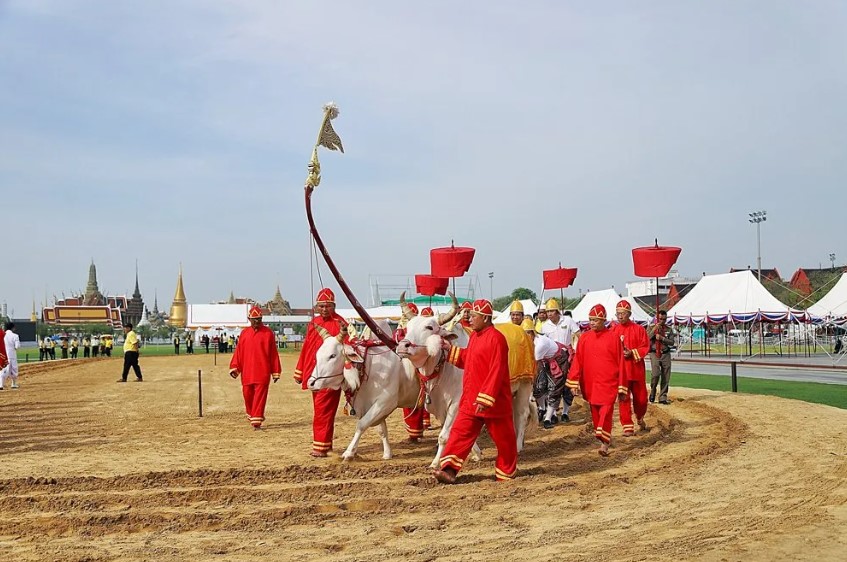The Royal Ploughing Ceremony 2023
The Royal Ploughing Ceremony 2023
วันที่นำเข้าข้อมูล 6 Jun 2023
The Royal Ploughing Ceremony 2023
The Ministry of Agriculture and Cooperatives is organizing the Royal Ploughing Ceremony (Phuech Mongkol Day) at Sanam Luang on Wednesday, May 17th, 2023, with the Rice Grains Blessing Ceremony will take place one day prior on Tuesday, May 16th. The ceremony will be broadcast via the Television Pool of Thailand.
Prophetic rituals

The ceremony consists of a series of rituals meant to prophesize the farming conditions of the year ahead. The “Ploughing Lord” (Phraya Raekna), a role that usually falls to the Permanent Secretary for Agriculture and Cooperatives—will draw a piece of cloth (phanung) from several identical pieces of different lengths placed upon a ceremonial table.
The shortest cloth predicts plentiful rain this year, a medium-length cloth predicts moderate rain, and the longest cloth predicts that drier conditions will prevail. Each amount of rainfall suggests different farming conditions for highland and lowland areas.
Then a pair of sacred oxen (phra kho) pull a wooden plough, as the Ploughing Lord sows rice grains to signify the start of the planting season. In Brahmanism, cattle are sacred animals that represent strength and fertility. The two oxen are chosen for the ritual based on an extensive criteria, including color, size, shape, overall beauty, leg strength, and even tail length.

The Ploughing Lord is joined by four “celestial maidens”—generally, female officials of the Ministry of Agriculture and Cooperatives—who carry the rice grains as queens of the sowing ceremony. Afterwards, the oxen are presented with seven foods and drinks: rice, maize, beans, sesame seeds, liquor, water, and hay.
If they choose rice or maize, then the rice and fruit harvest will be plentiful. On the other hand, beans or sesame seeds suggest fruits and other foods will be plentiful. Choosing water and hay portend plentiful rain and a good harvest, while choosing liquor indicates greater commerce.
Cultural origins
The Royal Ploughing Ceremony is an ancient Brahman tradition that can be traced back to the Sukhothai period. The ceremony is organized in May each year, ahead of the planting season.
The ceremony is preceded by the Rice Grains Blessing Ceremony, traditionally held at the Temple of the Emerald Buddha. The Rice Grains Blessing Ceremony is a Buddhist supplication ritual to bless the year’s harvest of rice, the main crop of Thailand.
Half of the rice grains will be sown in the Ploughing Ceremony, and the rest will be packaged and sent to farmers as tokens of good fortune. After the Ceremony has concluded, farmers will rush to collect the grains from the Ceremonial Ground, also for good fortune.

Reflecting the Kingdom’s strong agricultural foundations, the Royal Ploughing Ceremony was described by His Majesty King Rama V in historical text as a way to encourage the people to be persistent in their farming, to support themselves, and to bring prosperity and stability.
Because of its significance to Thai farmers, the day of the Royal Ploughing Ceremony was declared a public holiday in 1957 and National Farmers’ Day in 1966.
*******
Credit: https://www.thailandnow.in.th/event/the-royal-ploughing-ceremony/
สถานกงสุลใหญ่ ณ เมืองเจดดาห์
Office Hours : Sun - Thu, 09.00 hrs. - 16.00 hrs.